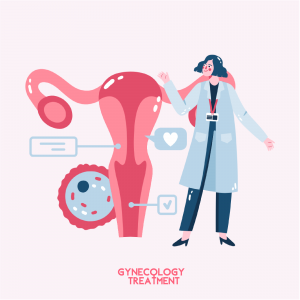Endometrial hyperplasia is more commonly known as uterine thickening. It is a condition that needs to be treated because it can develop into cancer of the lining of the uterus.
Who is more likely to have it?
Endometrial hyperplasia is more common in women who are obese or overweight, have a history of polycystic ovaries, are being treated for infertility, are hypertensive, diabetic, have been given estrogen for a long time without progesterone and are being treated for breast cancer. The risk is higher in patients who do not menstruate for several months and this condition recurs. It should be considered in bleeding that persists despite medication.
What are the symptoms and how is it diagnosed?
Endometrial hyperplasia is characterized by excessive bleeding after long intermenstrual periods. In some patients, ultrasound examination shows a thick uterine lining with irregular spaces. Conditions such as fibroids, polyps and adenomyosis that cause irregular menstruation should be excluded. In the presence of the additional factors listed above, endometrial biopsy should be performed in women under the age of 45 or over the age of 45 with irregular bleeding but no risk factors. In other words, the biopsy should be performed inside the uterus. Biopsy is a painless diagnostic method that can be performed under office conditions and takes less than a minute.
How is the treatment performed?
Endometrial hyperplasia (thickening of the lining of the uterus) is treated with medication and surgery. If the hyperplasia is composed of cells with a high probability of cancer, continuous medication is used, if not (simple) intermittent medication is used. In women over the age of forty, surgical removal of the uterus should be recommended if there is no desire for children. It is known that 30% of patients with thickening consisting of cells with a high probability of cancer (atypia) have concomitant cancer at the time of diagnosis. Therefore, if the patient does not want to have children, atypical hyperplasia should be treated like cancer of the lining of the uterus.

